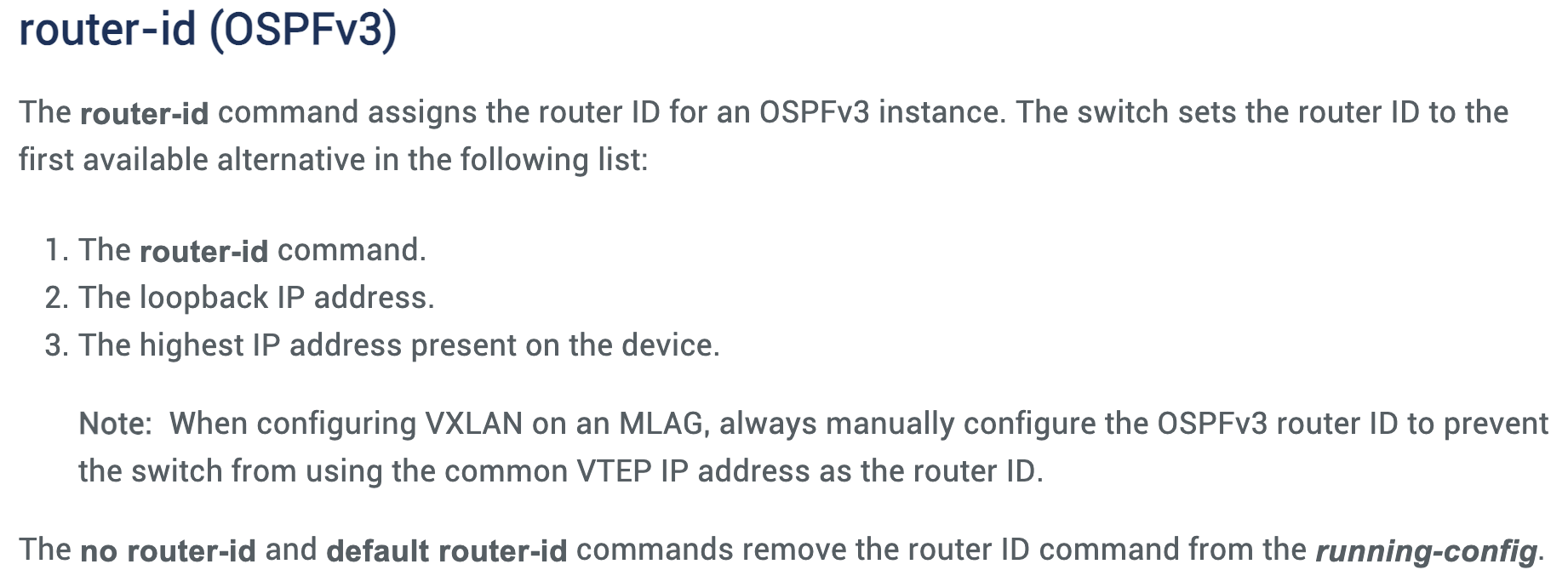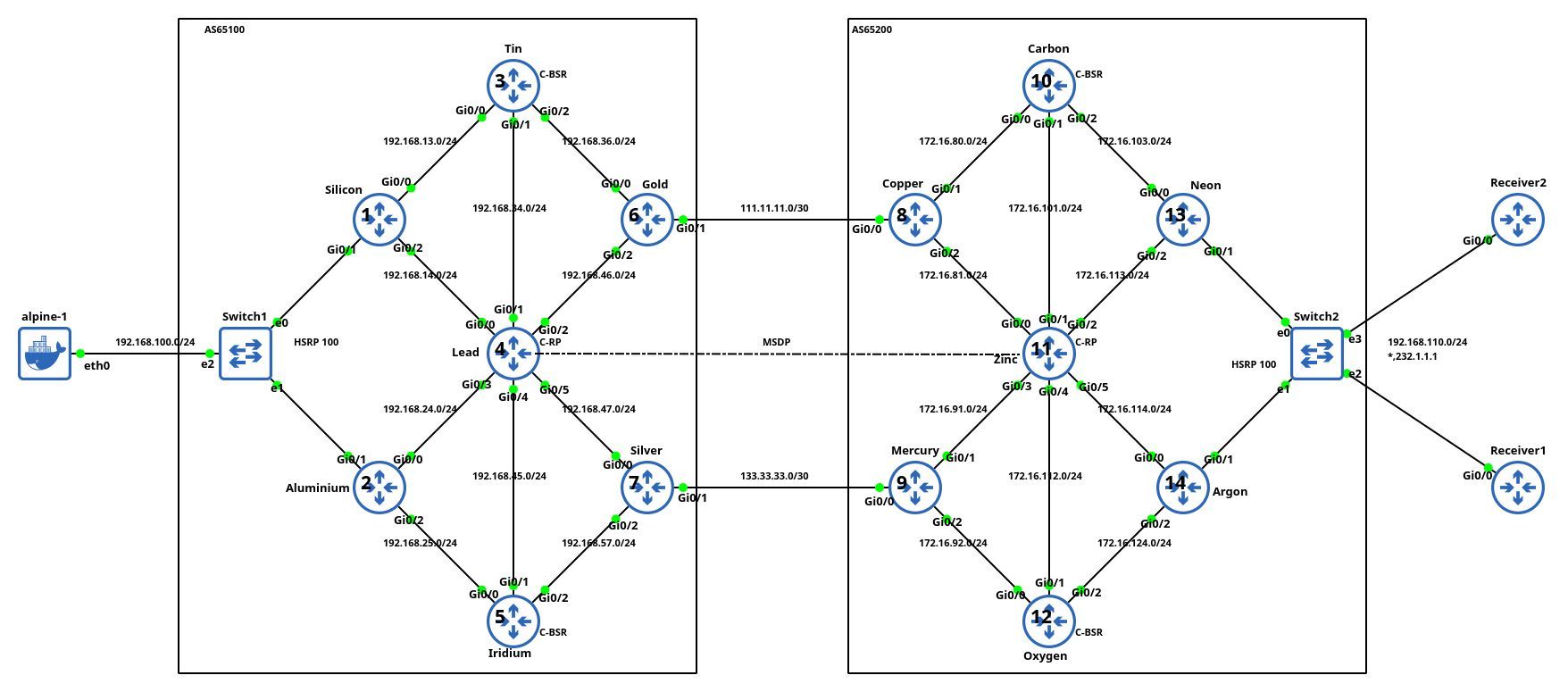Underscores (in Hostnames) Strike Again
I don’t know why I decided to allow underscores in netlab node names. Maybe it’s a leftover from the ancient days when some network devices refused to accept hyphens in hostnames, or perhaps it’s a programmer’s subconscious hatred of hyphens in identifiers (no programming language I’m aware of allows them for a very good reason).
Regardless, you can use underscores in netlab node names (and plugins like multilab use them to create unique hostnames), and they work great on Linux distributions we recommend… until they don’t.
What follows is a story about the weird dependencies that might bite you if you ignore ancient RFCs.
Lab: Multilevel IS-IS Deployments
Like OSPF, IS-IS was designed when router memory was measured in megabytes and clock speeds in megahertz. Not surprisingly, it includes a scalability mechanism similar to OSPF areas. An IS-IS router could be a level-1 router (having in-area prefixes and a default route), a level-2 router (knowing just inter-area prefixes), or a level-1-2 router (equivalent to OSPF ABR).
Even though multilevel IS-IS is rarely used today, it always makes sense to understand how things work, and the Multilevel IS-IS Deployments lab exercise created by Dan Partelly gives you a perfect starting point.

Click here to start the lab in your browser using GitHub Codespaces (or set up your own lab infrastructure). After starting the lab environment, change the directory to advanced/1-multilevel and execute netlab up.
IETF v6ops Working Group with Nick Buraglio
The first IPv6 specs were published in 1995, and yet 30 years later, we still have a pretty active IETF working group focused on “developing guidelines for the deployment and operation of new and existing IPv6 networks.” (taken from the old charter; they updated it in late October 2025). Why is it taking so long, and what problems are they trying to solve?
Nick Buraglio, one of the working group chairs, provided some answers in Episode 203 of the Software Gone Wild podcast.
Evergreen: The Big Ball of Mud
In 2007, Jeff Atwood published a legendary blog post summarizing a 1997 paper by Brian Foote and Joseph Yoder.
Reading that blog post (or the original paper), the inevitable conclusion is that we haven’t made much progress in the last 20 years. Even worse, almost every single pathological architecture described in that blog post applies quite well to real-life organically grown networks.
netlab 25.12: Cisco IOS/XR Configuration Modules, More VXLAN Goodies
netlab release 25.12 (25.12.02 to be exact – I had a few PEBCAK moments) was published last Friday. Here are the highlights:
- Significantly improved Cisco IOS/XR support. With the netlab release 25.12, you can configure VLANs, VRFs, static routes, route redistribution, OSPF default routes, BGP confederations, and BGP local-as
- VXLAN-over-IPv6 on Arista EOS
- VXLAN with ingress replication on Cisco Catalyst 8000v
- The shutdown link/interface attribute can be used to start labs with interfaces turned off
- Large BGP community lists, implemented on Arista EOS, FRR, and Junos. You can use standard- or large community lists in routing policies
- The netlab validate command will reread validation tests from a modified lab topology file every time you run it. It can also read validation tests from a separate file.
Lab: More Complex VXLAN Deployment Scenario
In the first VXLAN lab, we covered the very basics. Now it’s time for a few essential concepts (before introducing the EVPN control plane or integrated routing and bridging):
- Each VXLAN segment could have a different set of VTEPs (used to build the BUM flooding list)
- While the VXLAN Network Identifier (VNI) must be unique across the participating VTEPs, you could map different VLAN IDs into a single VNI (allowing you to merge two VLAN segments over VXLAN)
- Neither VXLAN VNI nor VLAN ID has to be globally unique (but it helps to make them unique to remain sane)
Technical Writing: Lower Your Expectations
Sean Goedecke published an excellent set of recommendations for good technical writing, including:
- Keep it short
- Try to make your point in the first sentence
- Details matter less than you think.
Based on some emails I received in the past (and the lack of response to the lengthy emails I sent), we should apply the same rules to emails (and all other forms of technical communication).
Worth Watching: AI/ML Data Center Design
What could be better than watching 0x02 Jeffs discuss networking? How about having Petr Lapukhov of the RFC 7938 fame as a guest discussing AI/ML Data Center Design?
Note: Petr disappeared into the information black hole called Facebook over a decade ago, so I wondered how they allowed him to chat on a podcast for hours. It turns out he moved to NVIDIA, which might influence the podcast content a bit, but I’m pretty sure Petr is still Petr ;)
Multi-Pod EVPN Troubleshooting (Part 3)
Last week, we fixed the mismatched route targets in our sample multi-pod EVPN fabric. With that fixed, every PE device should see every other PE device as a remote VTEP for ingress replication purposes. We got that to work on Site-A (AS 65001), but not on Site-B (AS 65002); let’s see what else is broken.
Note: This is the fifth blog post in the Multi-Pod EVPN series. If you stumbled upon it, start with the design overview and troubleshooting overview posts. More importantly, familiarize yourself with the topology we’ll be using; it’s described in the Multi-Pod EVPN Troubleshooting: Fixing Next Hops.
Ready? Let’s go. Here’s our network topology:
netlab as the Universal Configuration Translator
Dan Partelly, a heavy netlab user (and an active contributor), sent me this interesting perspective on how one might want to use netlab without ever building a lab with it. All I added was a bit of AI-assisted editing; my comments are on a grey background.
In all podcasts and interviews I listened to, netlab was referred to as a “lab management solution”. But this is misleading. It’s also a translator, due to its ability to abstract devices, and can easily generate perfectly usable configs for devices or technologies you have never worked on.
Fun Reading: From XML to LLMs
In his latest blog post (Systems design 3: LLMs and the semantic revolution), Avery Pennarun claims that LLMs might solve the problem we consistently failed to solve on a large scale for the last 60 (or so) years – the automated B2B data exchange.
You might agree with him or not (for example, an accountant or two might get upset with hallucinated invoice items), but his articles are always a fun read.
Lab: IS-IS Route Redistribution
Route redistribution into IS-IS seems even easier than its OSPFv2/OSPFv3 counterparts. There are no additional LSAs/LSPs; the redistributed prefixes are included in the router LSP. Things get much more interesting once you start looking into the gory details and exploring how different implementations use (or do not) the various metric bits and TLVs.
You’ll find more details (and the opportunity to explore the LSP database contents in a safe environment) in the IS-IS Route Redistribution lab exercise.

Click here to start the lab in your browser using GitHub Codespaces (or set up your own lab infrastructure). After starting the lab environment, change the directory to feature/7-redistribute and execute netlab up.
OSPFv3 Router ID Documentation on Arista EOS
When I published a blog post making fun of the ridiculously incorrect Cisco IOS/XE OSPFv3 documentation, an engineer working for Cisco quickly sent me an email saying, “Well, the other vendors are not much better.”
Let’s see how well Arista EOS is doing; this is their description of the router-id command (taken from EOS 4.35.0F documentation; unchanged for at least a dozen releases):

Testing IP Multicast with netlab
Aleksandr Albin built a large (almost 20-router) lab topology (based on an example from Jeff Doyle’s Routing TCP/IP Volume 2) that he uses to practice inter-AS IP multicast. He also published the topology file (and additional configuration templates) on GitHub and documented his experience in a LinkedIn post.

Lab topology, copied with permission by Aleksandr Albin
It’s so nice to see engineers using your tool in real-life scenarios. Thanks a million, Aleksandr, for sharing it.
Multi-Pod EVPN Troubleshooting (Route Targets)
Last week, we fixed the incorrect BGP next hops in our sample multi-pod EVPN fabric. With that fixed, every PE device should see every other PE device as a remote VTEP for ingress replication purposes. However, that’s not the case; let’s see why and fix it.
Note: This is the fourth blog post in the Multi-Pod EVPN series. If you stumbled upon it, start with the design overview and troubleshooting overview posts. More importantly, familiarize yourself with the topology we’ll be using; it’s described in the Multi-Pod EVPN Troubleshooting: Fixing Next Hops.
Ready? Let’s go. Here’s our network topology:
